The cacao fruit and its secrets
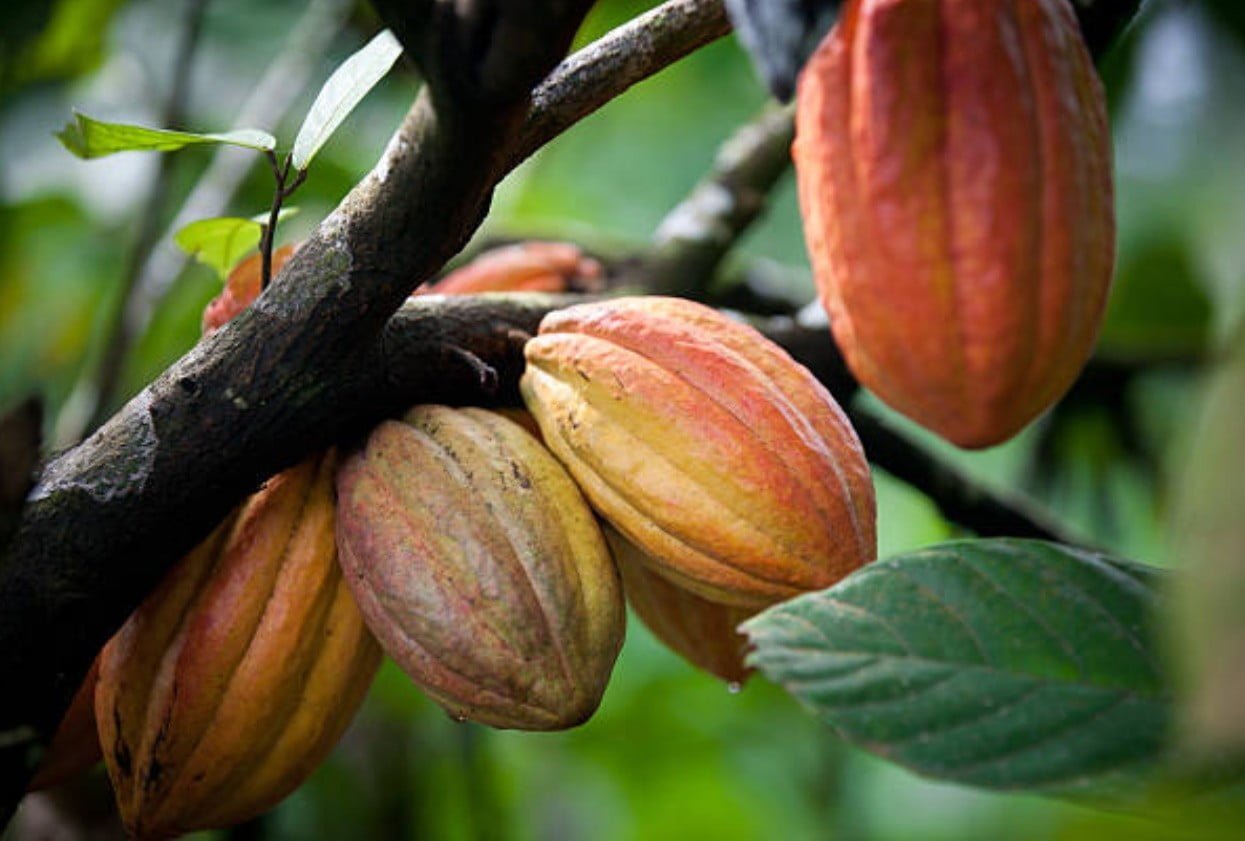
Featured products Learn more about our offer
View allIf you’re reading these words, there’s a good chance you’re no stranger to the taste of cacao – you may even be a foodie of the products the cacao fruit provides us with. But do you know what path the cacao fruit goes through, from the moment it is picked to the production of chocolate-flavored treats? This journey tells us a lot about the final result, although at first, the cacao seeds bear no resemblance at all to the distinctive brown powder in appearance and taste that we so readily pour into warm milk or water. Nevertheless, cacao production has been around for centuries, perhaps even thousands of years, and invariably starts with the same thing: the cacao fruit. And this fruit is a true wonder of nature!
Cacao fruit – a miracle of nature?
The cacao fruit looks quite inconspicuous. It is elongated, resembling a small rugby ball, and its colour ranges from yellow and green to brown, dark red, or maroon. The surface of the fruit shows characteristic longitudinal grooves. There is nothing in such a sight that foretells what the cacao pods can become in capable hands. After slicing the peel, our eyes are greeted with large, white seeds arranged along the axis of the fruit like corn kernels on a cob. The seeds are covered with tasty, white pulp [3], and an average fruit contains anywhere from several to even dozens of such seeds. The cacao tree, on the other hand, grows enough fruit per year to harvest half a kilogram of beans. That’s not a lot, so each seed contained within a cacao fruit is worth its weight… in cacao!
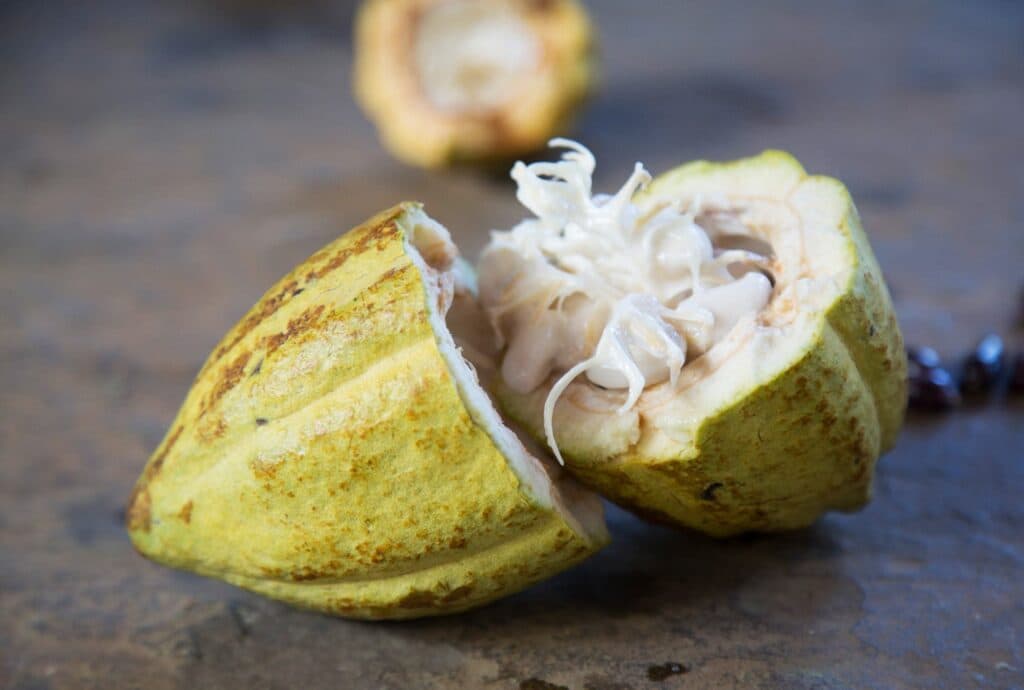

Cacao Fruit Proper(Theobroma cacao)
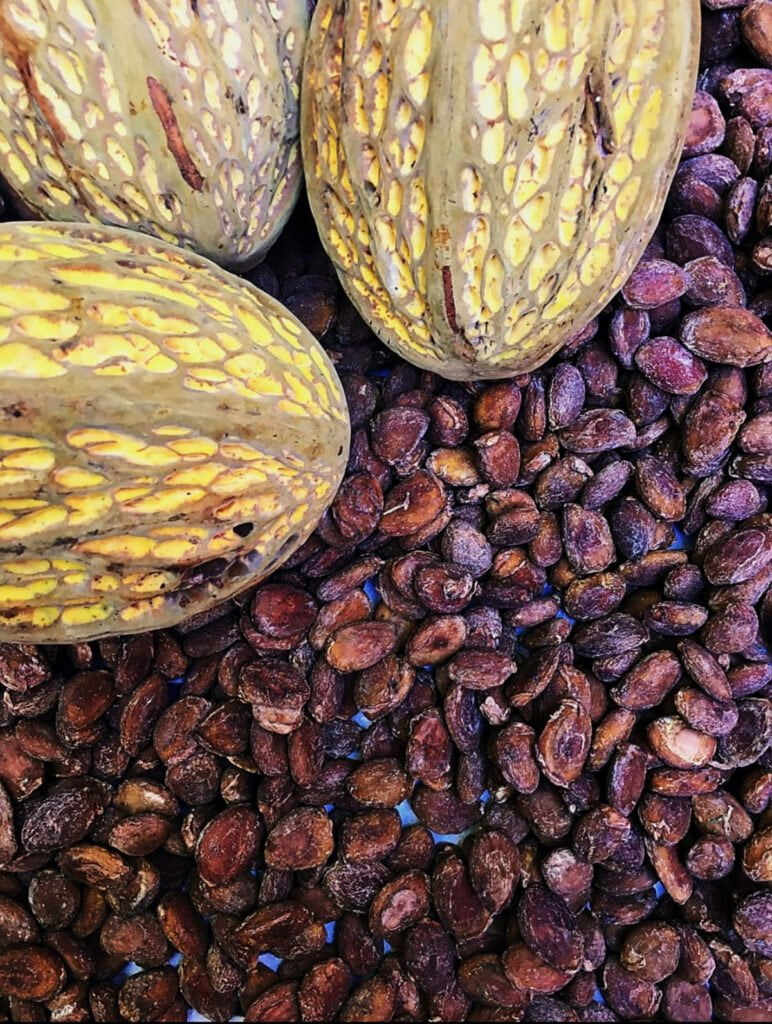

Pataxte Cacao Fruit, Mocambo (Theobroma bicolor)
Cacao grows mainly in equatorial climates: hot and humid. These are countries such as Ghana, Nigeria or the Ivory Coast, as well as Ecuador or Brazil. The importance of cacao is evidenced by the very fact that cacao cultivation is the source of livelihood for the vast majority of the population of countries such as Côte d’Ivoire and Ghana [1]. Returning to the fruits themselves, which grow directly from the trunk and branches of the cacao tree [2], after manually – usually – extracting the seeds from under the skin, cacao beans are ready for processing. And this is where the magic begins, which will transform the cacao fruit into an extraordinary delicacy.
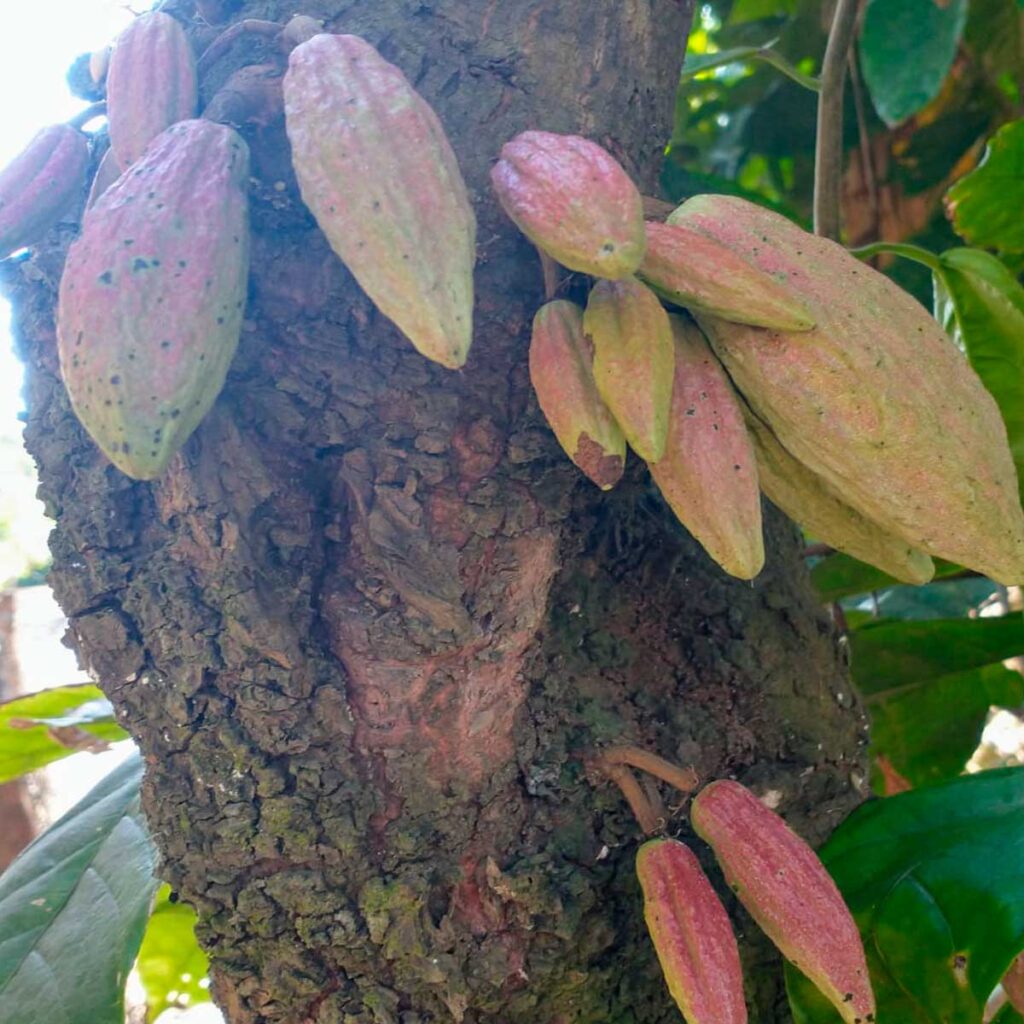

Criollo fruit on a cacao tree in Tabasco, Mexico
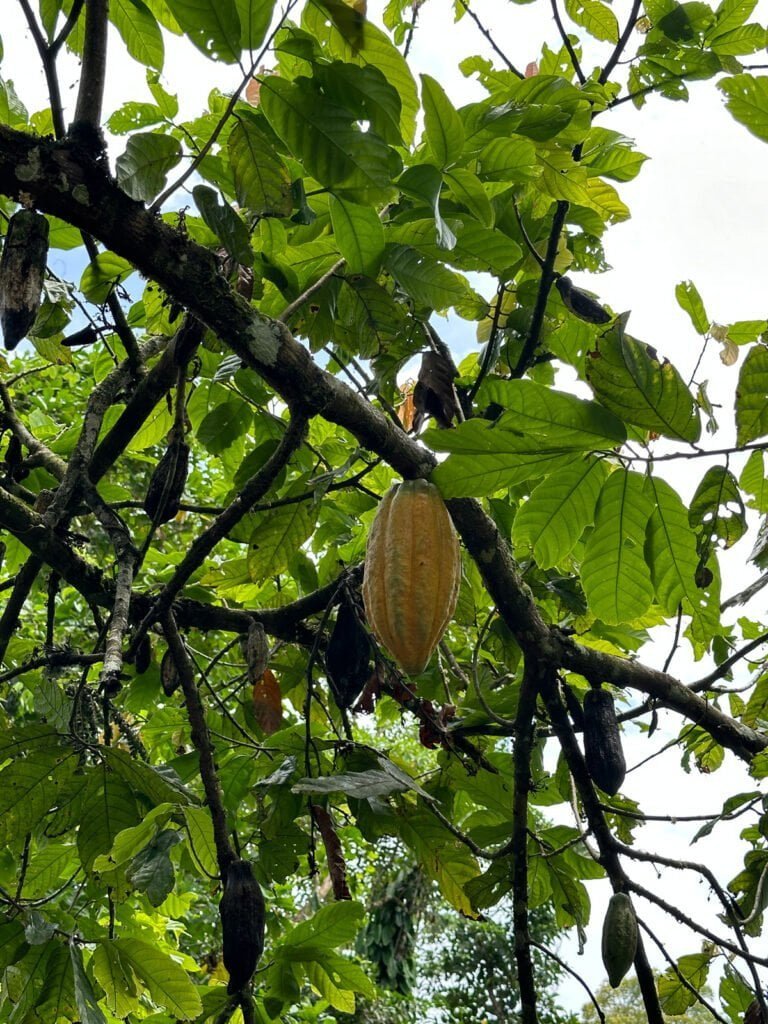

Cacao fruit in Nacional Arriba from Ecuador
Cacao fruit: from crop to grain
The white, almond-shaped seeds are just the beginning of the adventure. Here’s how cacao beans give us delicious cacao. First, the grains are thoroughly cleaned, sorted, and then fermented [2]. They are then roasted – we can buy such roasted, not fully processed grains as an interesting snack to munch on during a movie screening. Only when the roasted cacao beans are ground can we speak of cacao liquor or nibs[4]. An important step is the extraction of fat from the product and the preparation of cacao butter – the direct substrate for chocolate and many cosmetics. [2].
Ceremonial cacao is distinguished by the fact that it has not been defatted – it is a 100% cacao product, nutritious and caloric. In the usual process of cacao production, the fruit loses its natural fats, and the addition of sugar and other substances to the chocolate reduces its nutritional value. For this reason, real cacao, ceremonial cacao, can be confidently recommended as a valuable dietary ingredient – when it comes to chocolates, even dark ones, one should be a bit more cautious.
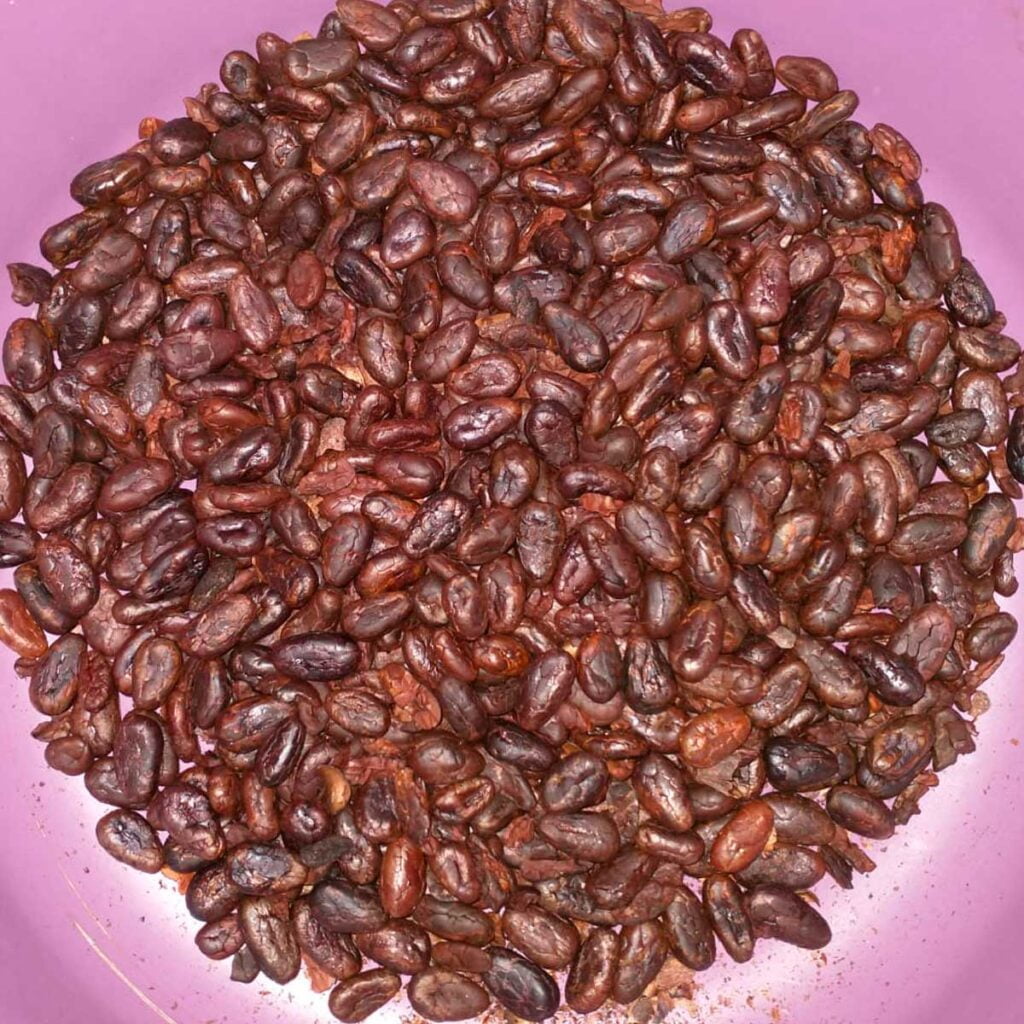

Roasted and shelled Criollo cacao beans


Drying of cacao beans
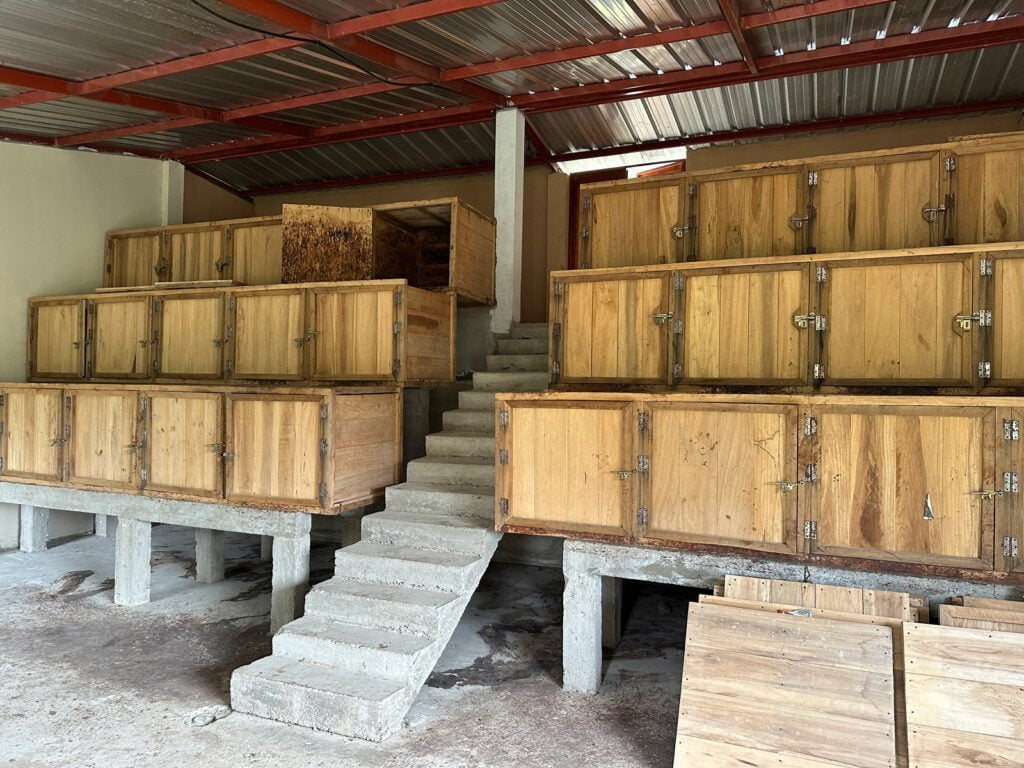

Fermentation Boxes for Cacao Beans
Cacao fruit price
Many people wonder about purchasing raw cacao pods, which raises questions about the price of such a fruit and whether cacao can be produced from scratch at home. Let’s start with the first question: how much does cacao fruit cost?
The price of the cacao fruit – after all, an exotic fruit – can come as a blow to many. One cacao fruit costs about 100 zlotys, although there are slightly cheaper deals on the Internet. Fans of natural, virgin products are recommended roasted cacao beans, which, with their characteristic slightly bitter taste, can make an interesting snack. It should be noted here that ceremonial cacao is also a low-processed product, especially when compared to standard cacao products such as chocolate. But what if, however, we are interested in making cacao at home? Can you make your own cacao at home?
It would be quite difficult to produce cacao from the cacao fruit at home. The initial steps of production, namely drying and fermentation, require special conditions, so we cautiously recommend starting cocoa production at home by purchasing already processed, roasted cacao beans. There are recipes on the Internet on how to make even your own chocolate from such grains [5]. However, even if our dream of producing our own cacao straight from the fruit has fallen through, the crafted cacao fruit remains an interesting decoration for the apartment, which can remind us of this miracle of nature, which is cacao.
Cacao fruit
As we can see, the journey that cocoa takes from plant to finished product on the cocoa store shelf is a long and complex process. This makes it all the more possible for us to appreciate the extraordinary qualities of ceremonial cacao, roasted beans, and all the chocolate products we so eagerly reach for. The next time you enjoy a hot drink with real cacao, think about how many factors went into making this wonderful aromatic experience!
